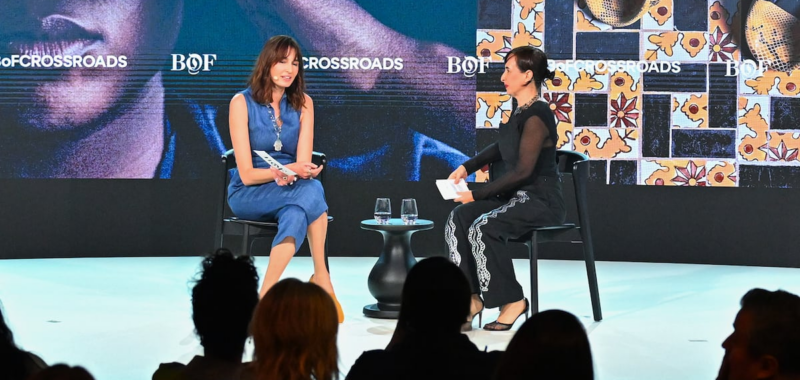
The author has shared a Podcast.You will need to accept and consent to the use of cookies and similar technologies by our third-party partners (including: YouTube, Instagram or Twitter), in order to view embedded content in this article and others you may visit in future.
Listen to and follow the BoF Podcast:Apple Podcasts | Spotify | Overcast
Background:
Itâs been a complicated year for luxury. The sector was already grappling with slowing growth but now American tariffs have disrupted global supply chains, driven prices upwards and dented consumer confidence.
But thereâs another, deeper long-term challenge that the industry needs to contend with: the perceived trivialisation of high-end fashion. Some brands have been able to overcome this value erosion by placing craftsmanship at their core, therefore connecting with customers in a deeper way.
Mexican designer Carla Fernández has long been at the forefront of ethical, craft-based fashion. Her eponymous brand collaborates closely with Indigenous artisans across Mexico, promoting traditional craftsmanship and advocating for policies like collective intellectual property rights.
âThe future is handmade because the objects that are handmade get inspiration from your community, from your environment,â says Fernández. âIt goes through your eyes, then it goes to your heart and comes out from your hands. And those are objects that have a soul.â
After experiencing first-hand how the fashion industry overlooks contributions from the Global South, Tunisian entrepreneur Kenza Fourati co-founded OSAY The Label, a brand focused on elevating artisan footwear crafted in Tunisia and using sustainable materials and traditional techniques.
This week on The BoF Podcast, in a riveting conversation from BoF CROSSROADS 2025, Carla and Kenza Fourati discuss the power of craft-based fashion, how to collaborate ethically with artisans and indigenous communities while redefining what true luxury means.
The author has shared a YouTube video.You will need to accept and consent to the use of cookies and similar technologies by our third-party partners (including: YouTube, Instagram or Twitter), in order to view embedded content in this article and others you may visit in future.
Key Insights:
- Fashion is an essential vehicle for storytelling. âTextile and text are very connected. If you walk in someone elseâs shoes, you connect with that person, and you see the unseen and the irrelevant,â explains Fourati. Through this perspective, fashion becomes a powerful medium to foster understanding and build connections between diverse cultures and experiences.
- Fernández shares that growing up in Mexico, she realised early on that the fashion industry often ignored the contributions indigenous people make to craftsmanship. âAt the age of 12, I realised that the haute couture of my country, claimed not to be fashion, was made by artisans in the mountains, deserts and jungles,â she says.
- The disconnect between where fashion is designed and where it is made reflects broader inequities in the system. Fernández says, âIn the global north, they keep focusing on the individual as the big name. In Indigenous communities, creation comes from all of us. Collaboration is the most important part.â
- True luxury is ethical, inclusive and deeply connected to origins and values. Fernández concludes that authenticity is inseparable from ethics. âIn true luxury, there is no oppression. To be original, you have to go back to the origins.â Fourati adds, âTrue luxury is being able to wear your values and wear your story.â

